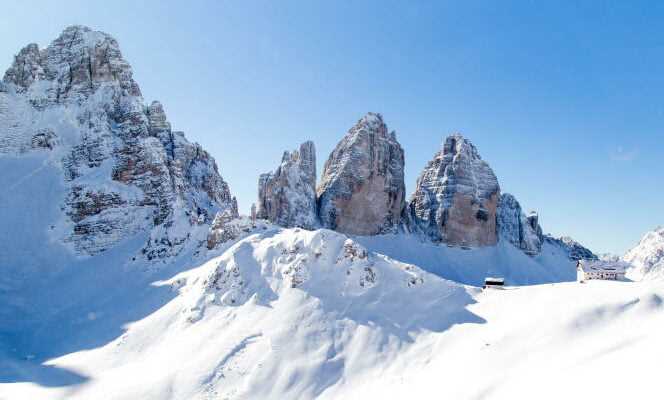The Dolomites is first and foremost about light. Incandescent at dusk, pale during the day, golden in the morning. We never get tired of this game of nuances. Neither do they. To believe that they have fun, well aware of their attractions. A luminosity that they owe in large part to dolomite, the rock of which they are made and which gave them their name. It was the Swiss botanist Nicolas Théodore de Saussure who baptized them in 1796, in homage to the French geologist Déodat Gratet de Dolomieu, who fell under their spell in the middle of the 18th century.and century.
At night, nature is even more mysterious, more silent. We walk slowly, fighting against the cold.
Previously, they were called “monti Pallidi”, pale mountains, in opposition to the rest of the Alpine massif whose rock is darker. Dolomite is a sedimentary rock formed largely of dolomite, an ore rich in calcium carbonate and magnesium. It is this alchemy that would be at the origin of their radical beauty. Now try to imagine those winter lights on the snowy mantle at the foot of the sharp-pointed tines, the famous spigolos, on the vertical walls flirting with the sky and the dark forests of conifers. It’s sumptuous.
We choose the part of the Dolomites located in the far north of Veneto, Italy, in the autonomous region of South Tyrol. After crossing Cortina d’Ampezzo, the Italian Avoriaz, we switch to the Val di Landro, very close to the Austrian border, to arrive in Dobbiaco. The road overlooks narrow valleys and reveals, along the passes and villages crossed, immense limestone walls that seem to appear out of nowhere.
This is where our quest for the Tre Cime di Lavaredo begins – Cima Ovest (2,973 m), Cima Grande (2,998 m) and Cima Piccola (2,856 m). “ Those that are easily recognizable unlike other massifs,” comments Veronika Burgmann, from the village of San Candido, who speaks German, Italian and the dialect she learned in her family. Like all the inhabitants of this formerly Austrian region before being attributed to Italy at the end of the First World War. There followed a forced Italianization under Mussolini and long years of struggle before South Tyrol obtained its autonomy in 1972. Today, 70% of the population is German-speaking, which is why the names of the cities are written doubly in German and Italian, just like that of the summits on our map.
You have 67.74% of this article left to read. The following is for subscribers only.
